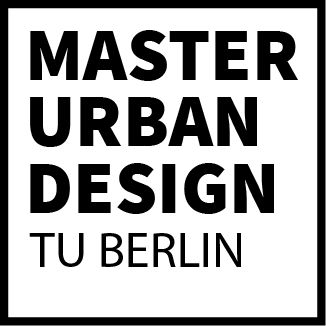
Urban Design Studio
Spatial Commons 15 – Berlin Where Do We Stand? WS 2022/2023
Tutors: Anna Heilgemeir, Julia Köpper and Jörg Stollman
Chair of Urban Design and Urbanisation, Chair of Urban Design and Urbanisation
Students:
Katharina Quest, Ada Karadogan, Gustavo Montemayor, Mina Fazlikhani
The Böttgerblock is part of the neighborhood of Gesundbrunnen, which is located northeast of Berlin Mitte. Many parts of the neighborhood were destroyed during WWII, the post-war time meant reshaping the area. In 1961 around 825k Turkish guest workers came to Berlin, many of them settled down in the Gesundbrunnen area, shaping it into an arrival neighborhood for migran
ts. Apart from Wilde 17 community garden, the block offers no threshold community areas that invite a heterogenous group of neighbors to interact. More than half of its area is used as parking and working areas for the car shops. Inside the block, most of the surface is sealed with the exception of little spontaneous vegetation.

The Böttgerblock area has always been an arrival space for people moving to Berlin. Rather than an urban development project that will increase rents and gentrify the block, Arrival (re)Structure’s approach aims to build with the existing and develop the block as an arrival space which is suitable for its community by preserving its characteristics.The mission of the proposal is “expand existing networks while keeping its character of an „Arrival City“ expressed throughout current users and most significant spaces”.
MAKE THE BLOCK OPEN AND ACCESSIBLE, EXPAND NETWORKS WHILE KEEPING ITS CHARACTER (OF AN ‘ARRIVAL CITY’)
- Offer “stepping stones”, places to newly arriving and floating populations to stimulate their integration within the communities they will become part of.
- Make the new street life visible and accessible to residents and users by associating with existing social networks and structures.
- Use the existing urban fabric and infrastructure to develop spaces that highlight cultural and historical aspects to foster intercultural exchanges.
Key themes explored include:
- What does open space mean on a social and ecological level?

- How to ensure heterogeneity of open spaces and transition zones between responsibility and freedom?

- How can community and social amenities on the first floor be co-designed, translated into regulations and funded?

- How can concrete actors (caretakers) find a place and be secured? quality control?

- What does upgrading + quality mean? and for whom?




